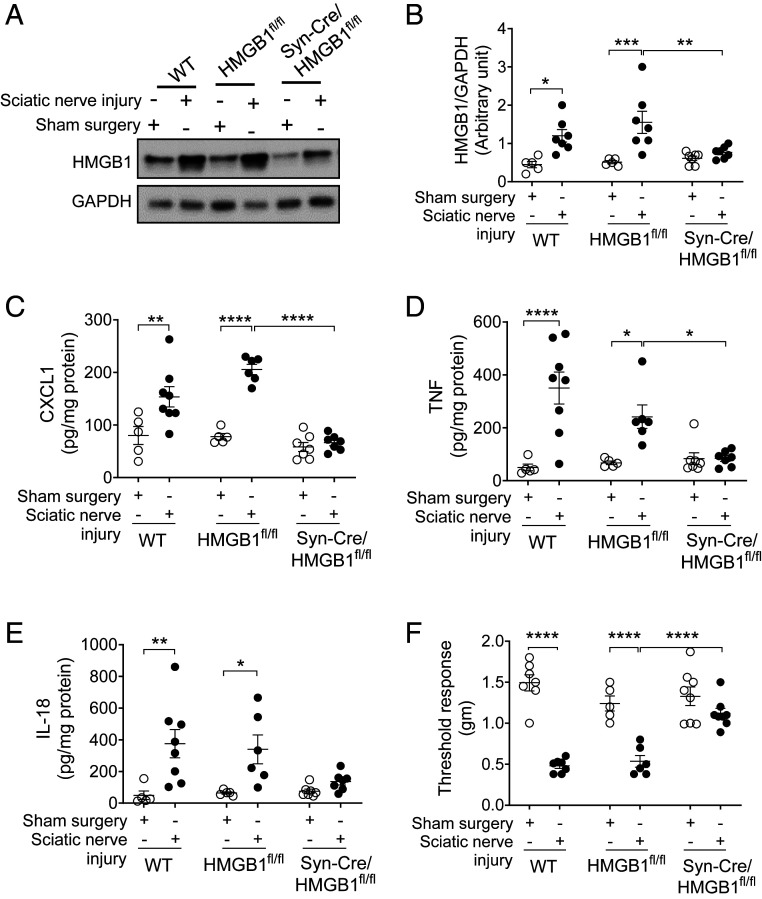Fig. 2.
Neuronal HMGB1 ablation leads to reduced local inflammation and hyperalgesia after sciatic nerve injury. (A and B) Sciatic nerve injury induces increase in HMGB1 levels. (A) WT (n = 5 to 7), HMGB1fl/fl (n = 5 to 6), or Syn-Cre/HMGB1fl/fl mice (n = 7) were subjected to sciatic nerve ligation surgery or sham surgery. Representative images of Western blot for HMGB1 and GAPDH in the paw tissues 2 wk postsurgery. (B) Ratio of HMGB1/GAPDH expression. Data are represented as individual mouse data points with mean ± SEM. Two-way ANOVA followed by Sidak’s multiple comparisons test between groups: sham surgery vs. sciatic nerve injury (WT: *P < 0.05, HMGB1fl/fl: ***P < 0.001); sciatic nerve injury: HMGB1fl/fl vs. Syn-Cre/HMGB1fl/fl mice **P < 0.01. (C–E) Syn-Cre/HMGB1fl/fl mice mount reduced local chemokine and cytokines response. Levels of (C) CXCL1, (D) TNF, and (E) IL-18 in the paw tissues from WT (n = 5 to 8), HMGB1fl/fl (n = 5 to 6), or Syn-Cre/HMGB1fl/fl mice (n = 7). Data are represented as individual mouse data points with mean ± SEM. Two-way ANOVA followed by Sidak’s multiple comparisons test between groups: *P < 0.05, **P < 0.01, ****P < 0.0001. (F) Two weeks after sciatic nerve ligation surgery or sham surgery, mechanical hypersensitivity (von Frey) was assessed in WT (n = 7), HMGB1fl/fl (n = 5 to 6), or Syn-Cre/HMGB1fl/fl mice (n = 8). Data are represented as individual mouse data points with mean ± SEM. Two-way ANOVA followed by Sidak’s multiple comparisons test between groups: ****P < 0.0001.

